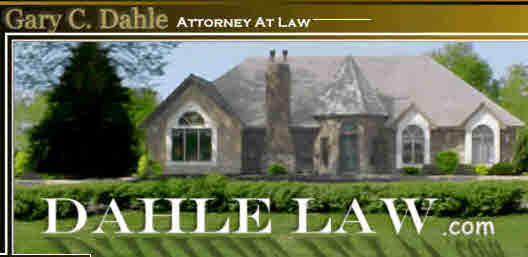The 1898 Augsburg Seminary Minnesota Supreme Court Settlement Agreement
Rev. L. F. Clausen—one of the Applicants in the legal proceedings, and the Secretary of the Litigation Committee for the United Church—opened settlement discussions by writing a letter to Professor Oftedal, suggesting the possibility of a satisfactory out of court settlement.[1]
Since Professor Oftedal was in Europe, the correspondence requesting the commencement of settlement discussions was opened by other members of the Augsburg Seminary Board of Trustees, who agreed to meet with the United Church Litigation Committee to discuss a possible settlement.[2]
Professor Oftedal had left instructions with Mr. Olaf Hoff—the vice-chairman of the Augsburg Seminary Board of Trustees, and one of the Oftedal Trustees—to communicate with him by private “telegraph code” in the event that he received any settlement offers from the United Church.[3]
At meetings held in Minneapolis on July 20 and 21, 1898, the Litigation Committee of the United Church, and Mr. O. Hoff and Professor A. M. Hove—representing Augsburg Seminary—adopted a Memorandum of Settlement,[4] effective on August 27, 1898, which entitled the United Church to receive:
- the Endowment Fund—in the approximate amount of $49,000;
- the contents of that part of the Augsburg Seminary library which had been acquired from Augustana College and Theological Seminary in 1869, and
- all library volumes which had been purchased by Augsburg Seminary prior to January 1876—essentially that part of the library which Professor Weenaas had either donated to Augsburg Seminary, or had procured for it.[5]
In return, the supporters of the United Church relinquished all rights to the other property of the Augsburg Seminary corporation.[6]
Therefore, the Oftedal Trustees retained control of the campus of Augsburg Seminary, a majority of the school’s library volumes, and certain other personal property items—including the right to the name “Augsburg Seminary”. [7]

According to Augsburg historian Andreas Helland, the Memorandum of Settlement relating to the Augsburg Seminary controversy was apparently entered into by the Oftedal Trustees—parties to the original litigation and the lawful Board of Trustees for the Augsburg Seminary corporation, and the United Church—acting through its lawful Board of Trustees, while the Competing Trustees elected by the United Church were not parties to the Memorandum of Settlement.[8]
Lutheran Church historian Eugene L. Fevold reported that a Memorandum of Settlement dated July 21, 1898, was signed by N. C. Brun, O. A. Veblen, and L. F. Clausen on behalf of the United Church, and by A. M. Hove and Olaf Hoff—pro tem chairman of the Augsburg Board of Trustees—for the Augsburg Seminary corporation, and on August 27, 1898, the Hennepin County District Court approved the terms of the Memorandum of Settlement.[9]
As a part of the Memorandum of Settlement, none of the parties were allowed to disparage the terms of the agreement, and were to use whatever influence they had to discourage their followers from making any disparaging comments regarding the settlement agreement.[10]
Notwithstanding such restrictions, there were rumors among the United Church supporters that pursuant to the terms of the Memorandum of Settlement, the Oftedal Trustees personally owned the campus of Augsburg Seminary, and the newly created Lutheran Free Church—which was not incorporated—merely assumed the obligation to pay its bills, without having ownership of its property.[11]
That charge had apparently been circulating since prior to the commencement of litigation, and caused the Rev. Ole Paulson in March of 1897 to issue the following rebuttal:
I have never claimed, nor has any of the incorporators or trustees of Augsburg, to my knowledge, at any time claimed, to be the owner in his own right of any of the property or funds of Augsburg Seminary, or to have any legal interest or estate therein.
Our claim is, and always has been, that the corporation of which we are members and trustees holds its property in trust for the use and benefit of the professors and students now officiating at or attending the said seminary, and for the use and benefit also of the professors and students thereof that may come hereafter.[12]

Conclusion
Even though the parties ultimately compromised on the issues which were in dispute, the Memorandum of Settlement would never been possible without the leverage provided by the declaration of the Minnesota Supreme Court in its decision issued on June 9, 1898:
Our conclusion is that, the relators having failed to show any title to the offices in themselves, the order appealed from should be reversed, and the proceedings remanded, with directions to the court below to quash the information. It is so ordered.
Eugene L. Fevold observed that the legal issues in this controversy were more complicated than the parties had anticipated – to the surprise of all concerned – including their attorneys:
The parties to the dispute had to rely heavily on legal advice, and one can only marvel at the willingness and capacity of American lawyers and judges to find their way meaningfully through the debates, documents, and history of immigrant Norwegian Lutherans.[13]
Notes
[1] Nelson and Fevold, Lutheran Church Among Norwegian-Americans, 2:77, citing Beretning . . . Den f. Kirke . . . 1899, p. 254.
[2] Ibid, 2:78.
[3] Ibid, 2:78, footnote 180. Andreas Helland, Augsburg Seminar Gjennum Femti Aar, 1869-1919, p. 238 (Minneapolis, 1920).
[4] The memorandum is to be found in the official minutes (1899) of both the United Church (pp. 254-263) and the Free Church (pp. 30-33).
[5] Helland, Georg Sverdrup, 160.
[6] Minneapolis Tribune, July 17, 1898, page 4; July 21, 1898, page 5; August 28, 1898, page 16. Chrislock, From Fjord to Freeway, pages 79-80. Helland, Georg Sverdrup, 160.
[7] Helland, Georg Sverdrup, 160.
[8] Ibid.
[9] Fevold, The Lutheran Free Church; a Fellowship of American Lutheran Congregations 1897-1963, 77-78 (Minneapolis, 1969).
[10] Helland, Georg Sverdrup, 160.
[11] Ibid, 181.
[12] Aff. Ole Paulson, March 2, 1897, ¶ 31, page 72.
[13] Fevold, The Lutheran Free Church; a Fellowship of American Lutheran Congregations 1897-1963, 78.
Copyright to the text 2019, Gary C. Dahle. All rights reserved.
